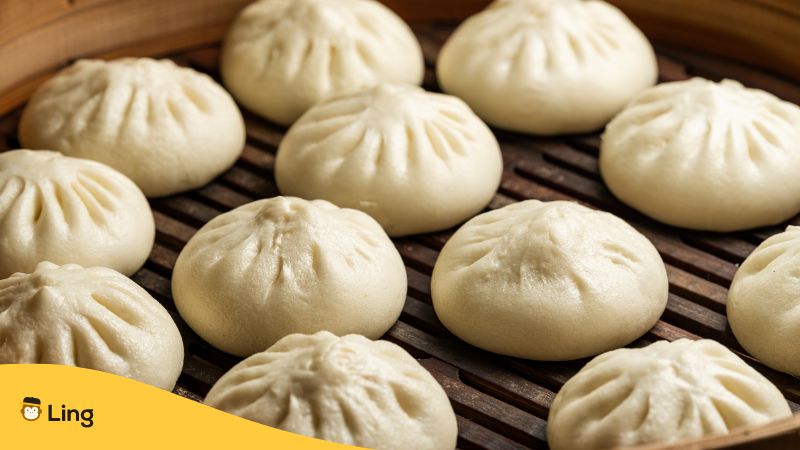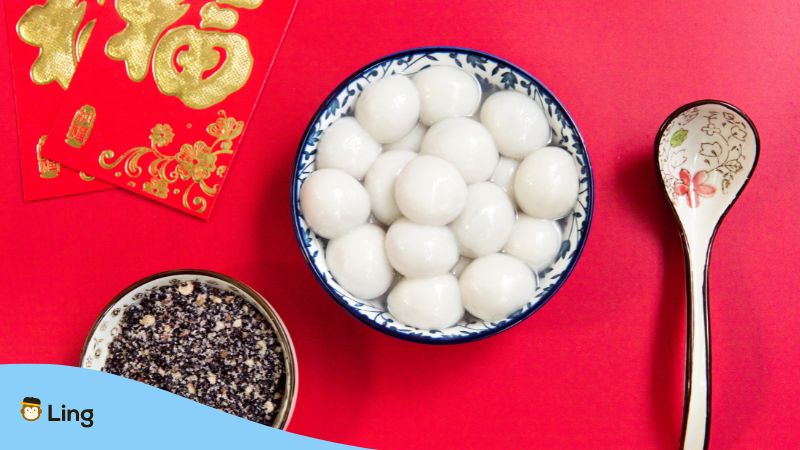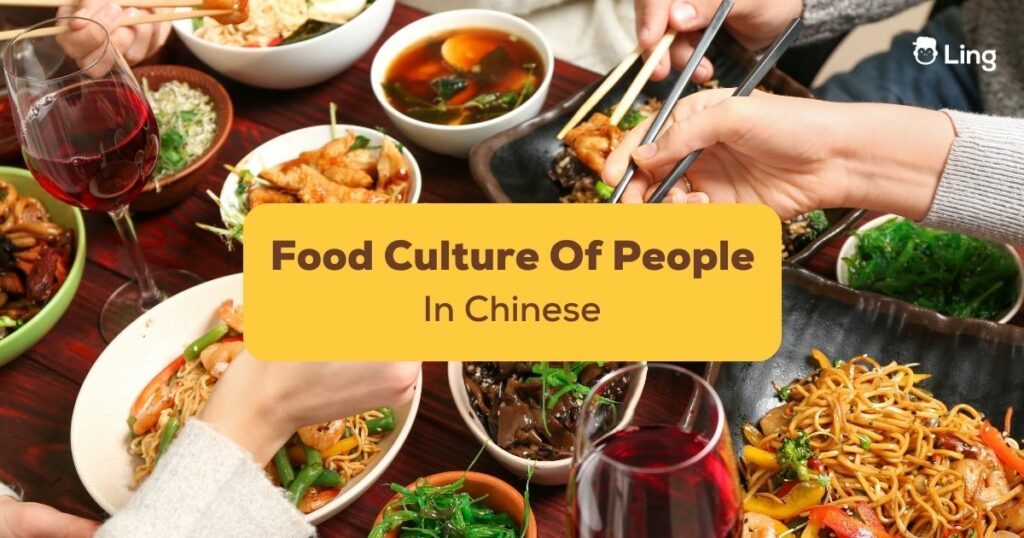Hey there, fellow foodies and language enthusiasts! Are you ready to dive into the delicious world of Chinese cuisine and culture? Well, you’re in the right place! In this fun guide, we will explore the rich food culture of Chinese people. Trust us – it’s a treat for your taste buds and language skills.
Did you know that understanding a country’s food culture can seriously boost your language-learning journey? Yep, that’s right! So, grab your chopsticks, and let’s dig in!
A Tasty Trip Through Time: The History Of Chinese Cuisine
Let’s start our flavorful journey by traveling back in time to ancient China. Chinese cuisine has a history that dates back thousands of years! Food was not just about filling the stomach; it played an essential role in traditional Chinese medicine, rituals, and even politics.
The Imperial Influence
China is a vast country with diverse landscapes and climates, which means there’s a whole world of flavors to explore. From the rich, bold, and tasty cuisine of Northern China to the delicate flavors of Southern cuisines, each region has its unique take on food that’ll make your taste buds dance.
Regional Flavors
China is a vast country with diverse landscapes and climates, which means there’s a whole world of flavors to explore. From the rich, bold, and tasty cuisine of Northern China to the delicate flavors of Southern cuisines, each region has its unique take on food that’ll make your taste buds dance.
The Silk Road And Beyond
The famous Silk Road opened up China to the world, bringing in new ingredients, cooking techniques, and flavors. This cultural exchange not only enriched Chinese cuisine but also influenced food cultures across Asia and beyond.
Now that you’ve got a taste of the past, you’re ready to explore the rich food culture of Chinese people and how it can enhance your language-learning journey. Let’s dig in!
A Flavorful Tour Of China: The Eight Culinary Traditions
China’s vastness and diversity have given rise to a rich tapestry of culinary traditions. Often referred to as the “Eight Great Traditions,” these regional cuisines showcase the unique flavors and ingredients found across the country. Let’s embark on a mouthwatering journey through China’s eight culinary traditions!
Anhui (徽菜 – huī cài)
Nestled in the mountains of eastern China, Anhui cuisine is all about using fresh, local ingredients. Known for its wild game and earthy flavors, Anhui dishes often feature braising and stewing techniques to create hearty, satisfying meals.
Cantonese (粤菜 – yuè cài)
Originating from the southern Guangdong province, Cantonese cuisine is famous for its delicate flavors and emphasis on fresh ingredients. Think dim sum, steamed fish, and sweet and sour pork – Cantonese dishes are all about balance and subtlety.
Fujian (闽菜 – mǐn cài)
With its coastal location, Fujian cuisine is a seafood lover’s paradise. The dishes here are characterized by their umami-rich flavors, often achieved through the fermented fish sauce and other savory ingredients.
Hunan (湘菜 – xiāng cài)
Get ready for some heat! Hunan cuisine, hailing from the landlocked province of Hunan, is known for its bold, spicy flavors. Chili peppers, garlic, and shallots are the show’s stars in dishes like spicy stir-fried tofu and smoked pork with dried long beans.
Jiangsu (苏菜 – sū cài)
Elegant and refined, Jiangsu cuisine hails from the lower Yangtze River region. Dishes here are known for their delicate flavors, beautiful presentation, and use of high-quality ingredients. Think braised pork belly, sweet and sour Mandarin fish, and lion’s head meatballs.
Shandong (鲁菜 – lǔ cài)
As one of the oldest culinary traditions in China, Shandong cuisine has had a significant influence on the food culture of Chinese people. Known for its seafood dishes, Shandong cuisine also features various cooking techniques, from quick stir-frying to slow braising.
Sichuan (川菜 – chuān cài)
Famous for its mouth-numbingly spicy flavors, Sichuan cuisine is not for the faint of heart. Hailing from the southwestern province of Sichuan, this culinary tradition is all about bold flavors, with dishes like mapo tofu, kung pao chicken, and hotpot taking center stage.
Zhejiang (浙菜 – zhè cài)
Last but not least, Zhejiang cuisine comes from the eastern coastal province of Zhejiang. Known for its fresh, clean flavors, this culinary tradition emphasizes the natural taste of ingredients, often using simple cooking methods like steaming and poaching.

A Feast for the Senses: Popular Chinese Dishes and Their Cultural Significance
The food culture of Chinese people is not just about tantalizing flavors. It’s also packed with cultural significance and fascinating stories. In this section, we’ll explore some popular Chinese dishes and their cultural meanings. Get ready to appreciate these delicacies on a whole new level!
Dumplings (饺子 – jiǎo zǐ)
Dumplings, or jiaozi, are a staple of Chinese cuisine and a symbol of good fortune. Traditionally eaten during the Lunar New Year, dumplings are said to bring wealth and prosperity due to their resemblance to ancient Chinese gold ingots. Plus, they’re delicious and versatile, with countless filling options to suit every taste.
Peking Duck (北京烤鸭 – běi jīng kǎo yā)
A dish with a history that dates back to the imperial era, the Peking duck symbolizes elegance and culinary mastery. The crispy skin, tender meat, and the ritual of slicing and serving the duck at the table make this dish a true celebration of Chinese culinary art.
Hotpot (火锅 – huǒ guō)
Hotpot is not just a meal; it’s a social experience. With a bubbling pot of soup at the center of the table, friends and family gather around to cook their favorite ingredients, from thinly sliced meats to leafy greens. Hotpot symbolizes unity and togetherness in Chinese culture, bringing people closer as they share a delicious meal.
Longevity Noodles (长寿面 – cháng shòu miàn)
As the name suggests, longevity noodles symbolize a long and healthy life. Traditionally served on birthdays and special occasions, these extra-long noodles are a tasty reminder of the importance of health and happiness in Chinese culture.
Mooncakes (月饼 – yuè bǐng)
Mooncakes are the star of the Mid-Autumn Festival, celebrating the full moon and family reunions. These sweet pastries, filled with ingredients like lotus seed paste and salted egg yolks, represent completeness and unity, making them a cherished symbol of Chinese culture.
Tangyuan (汤圆 – tāng yuán)
Tangyuan, or sweet rice balls, are a delicious symbol of harmony and togetherness. Typically eaten during the Lantern Festival, these sticky, sweet treats are a reminder of the importance of family and the joy of shared experiences.

The Tasty Terminology of Chinese Cuisine
Chinese food is a feast for the taste buds and a fascinating linguistic journey. The Chinese language is filled with food-related words and phrases, from the names of dishes to the expressions used while enjoying a meal. Let’s dive into some tasty terminology to make your next Chinese meal more enjoyable!
The Basics: Must-Know Food Words
In Chinese cuisine, it all starts with the basics. Rice and noodles are the foundation of many dishes, so knowing the words for these staple foods is essential. Here are some food staples in Chinese cuisine:
| English | Chinese | Pinyin | Sound |
| Rice | 米饭 | Mǐfàn | |
| Noodles | 面条 | Miàntiáo | |
| Meat | 肉 | Ròu | |
| Vegetables | 蔬菜 | Shūcài | |
| Fruits | 水果 | Shuǐguǒ | |
| Tea | 茶 | Chá |
Dish It Out: Popular Chinese Dishes
When it comes to the food culture of Chinese people, there’s no shortage of delectable dishes to try, from cold dishes to Chinese desserts. Here are some must-know words for popular menu items:
Tantalizing Toppings: Sauces And Condiments
No Chinese meal is complete without dipping sauces and condiments to enhance the flavors. Here are some essential words to know:
| English | Chinese | Pinyin | Sound |
| Soy Sauce | 酱油 | Jiàng yóu | |
| Oyster Sauce | 蚵油 | Hé yóu | |
| Chili Oil | 辣椒油 | Làjiāo yóu | |
| Black Bean Sauce | 豆豉酱 | Dòuchǐ jiàng |
Speak Like A Foodie: Common Phrases For Dining Out
When dining out in China, knowing key phrases is important to help you navigate the menu and communicate with fellow diners. Here are some essential expressions to make your dining experience a smooth and delicious one:

Embrace The Flavors And Keep Learning
The rich food culture of Chinese people is an essential part of language learning and a delightful journey to embark on. With its diverse flavors, regional specialties, and deep-rooted history, there’s always something new to discover and savor. So, don’t stop here!
Keep exploring and appreciating the fascinating world of Chinese cooking. You’ll find that it not only satisfies your taste buds but also deepens your understanding of the language and culture. Remember, every bite is a step closer to mastering the language and immersing yourself in the vibrant Chinese culture. Happy eating and learning!
Learn Chinese With Ling
Discover the joy of language learning with the Ling app, your ultimate companion on this exciting journey! Designed to make mastering a new language feel like a breeze, Ling App offers fun, interactive lessons that keep you engaged and motivated. Whether you’re a beginner or an advanced learner, Ling caters to your unique needs with personalized content and real-life scenarios.
Immerse yourself in a world of captivating games, quizzes, and challenges, all while gaining the confidence to speak like a local. Don’t let language barriers hold you back – unlock endless possibilities with the Ling app and explore the world today!
Download the app on App Store or Play Store today!




































































One Response
It’s nice that you pointed out how each region of China has its unique take on food that’ll make your taste buds dance. Chinese food is pretty fascinating and I want to taste the other types that I haven’t tried before. To make that easier, I am thinking of asking for a Chinese food delivery service.